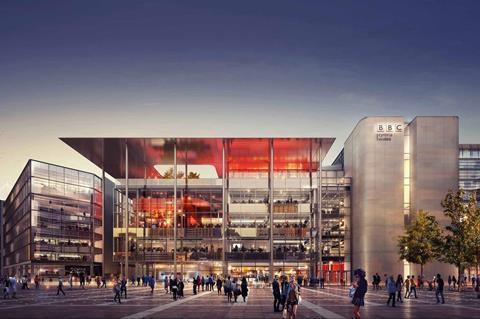IP is steadily gaining traction around the world with IBC2018 a forum to boost education and discussion about interoperability and the ramifications of SMPTE 2110.
For many people, the most iconic IP project in the world is Australia’s Andrews Production Hub. Based in Sydney and Melbourne, the Hubs have been producing live broadcasts of Aussie rules football, rugby, tennis and cricket for Fox Sports Australia since March direct from cities that are thousands of miles apart.

A remote and centralised production on this scale is delivering immediate logistical savings on freelance crews to the broadcaster. More significantly it is using SMPTE ST 2110 for the IP transport of the video and audio signals.
“This project basically redefines sports broadcast production for a whole continent,” says Andreas Hilmer, Director Marketing and Communications, Lawo, which with Sony, EVS and Ross was one of several vendors that worked with NEP Australia on delivery. “It’s seen as the blueprint for building a distributed infrastructure that makes use of IP networking in combination with the data centre principles.”
The -10, -20, -30 and -21 portions of the SMPTE ST 2110 suite cover the most essential parts of television infrastructure – video, audio and timing – and specify core capabilities for moving separate essence streams across IP networks.
ST 2110-40, the latest to be published, in May, enables packets to be moved synchronously with associated video and audio essence streams. This advance means that every element that has been part of the traditional SDI studio can now be put into an IP studio.
At Wimbledon, IP technologies were deployed to create the equivalent of a 3000 x 3000 router, which meant an operator could call up any signal needed from any of the courts. This simply would not have been possible with SDI where, for instance, signals would have had to be carefully selected and delivered via SDI router tie-lines. An additional benefit is that the system is also able to support UHD production without requiring a separate routing infrastructure.
“TV is going to evolve into something more immersive, more pervasive, more interactive and more personalised,” BBC technology chief Matthew Postgate predicts. “For the BBC the question about our IP future becomes not just when, but also how.”

A clue can be found in Cardiff where the BBC is shortly to open a regional hub based around the latest IP protocols for incoming and outgoing feeds including 2110-40. It is seen as the template for its future development.
The end goal of an all-IP environment is widely agreed across the industry, but the journey is as important as the destination. People come to IBC not only because it showcases proven, standards-based IP solutions, but also to encounter the expertise to help them navigate the transition.
“A handful of IP implementations have already proven their worth in terms of flexible routing, switching, remote production and more where circumstances can be tightly controlled,” says Bryce Button, Director of Product Marketing at AJA Video Systems.
Vice News in New York was one of the world’s first news organisations to implement a pure IP-based technology infrastructure. And the Recife facility of Brazil’s TV Globo is the first Latin American broadcaster to implement IP for live production.
“SMPTE ST 2110 is speeding the transition by making it simple and safe to create best-of-breed solutions through standardised communications,” says Steve Reynolds, Imagine’s President Playout & Networking.
“Momentum is building for IP adoption,” concurs Mike Cronk, Chairman of Alliance for IP Media Solutions (AIMS). “Operations everywhere are recognising the key benefits of IP, such as much greater systems scalability than was ever possible with SDI, the ability to build UHD and HDR systems without having to compromise on signal counts, and the ability to share resources to improve equipment utilisation.”
‘The future of IP lies in our ability to make it easier to use and deploy’ Raphael Triomphe
However, the Andrews Hubs are outliers in an industry that remains a long way from full IP transition. Even AIMS admit that rollout is in its infancy.
“The truth of the matter is that this is an industry in transition, and that is going to continue for some time to come,” says Reynolds.
Imagine’s own research suggests 6% of media enterprises worldwide are already all-IP, and a further 8% just have the odd SDI island. Set that against 40% which are still all SDI.
“Our survey says that in five years’ time, as many as 10% of businesses will still be all SDI. No prudent business is going to throw out viable technology, so IP connectivity will take over as legacy hardware needs to be replaced.”
Button agrees. “A number of broadcasters are reluctant to make the leap to an all-IP workflow until remaining auto-discovery and security challenges are resolved. As a result, a majority of deployments we see in current broadcast efforts will continue to be hybrid SDI/IP implementations for a while yet.”

Even if, for most broadcasters, the question of ‘why IP?’ has basically turned into a question of ‘how?’ and ‘when?’, “there’s still a vast amount of confusion out there,” says Hilmer. “Many customers are seeking qualified advice.”
This view is backed by audio codec specialist Digigram. “IP has not yet completely won over everyone and we still have to face some fears from certain CTOs,” says Raphael Triomphe, Product Director. “To counter this reluctance, the future of IP lies in our ability to make it easier to use and deploy.”
With 98% of technology users demanding interoperable solutions, the IABM urges vendors to adopt a more open approach to product interoperability.
Most live production is wedded to legacy architectures. Liberty Media may have driven digital innovation into Formula One, including the launch of OTT service F1TV, but the host broadcast feed which is channelled online is produced from flyaways based on SDI.
Likewise, the two sporting organisations with the most financial firepower, have yet to invest wholeheartedly in IP. FIFA’s production workflow for this summer’s World Cup was an all UHD and HDR affair but routed all audio, video and metadata signals around its OB trucks and to and from the Moscow IBC using conventional circuits. The Winter Olympics in South Korea at the start of the year moved more of its networks than ever before towards IP for video transport to accommodate increased broadcaster needs for remote operations, but as with its 8K, 5G and VR innovations this was a side order to the main event.
IP Showcase at IBC2018
A record number of vendors – more than 60 – will be presenting at the IP Showcase, sponsored by AES, AMWA, AIMS, EBU, SMPTE and VSF. Product categories cover just about everything under the sun, including cameras, test and measurement equipment, replay servers, encoders, asset management systems with native ST 2110 ingest capability, router control systems capable of using AMWA IS-04 and IS-05 Discovery/Registration and Connection Management.
An important goal of the IP Showcase at IBC2018 is education. There will be wall displays and in-theatre demonstrations (from Pebble Beach among others), that give further insight into why people are moving to IP-based systems. In terms of protocols the focus is on open standards and specifications including the ST 2110 standards suite, AMWA IS-04 and IS-05.
























No comments yet